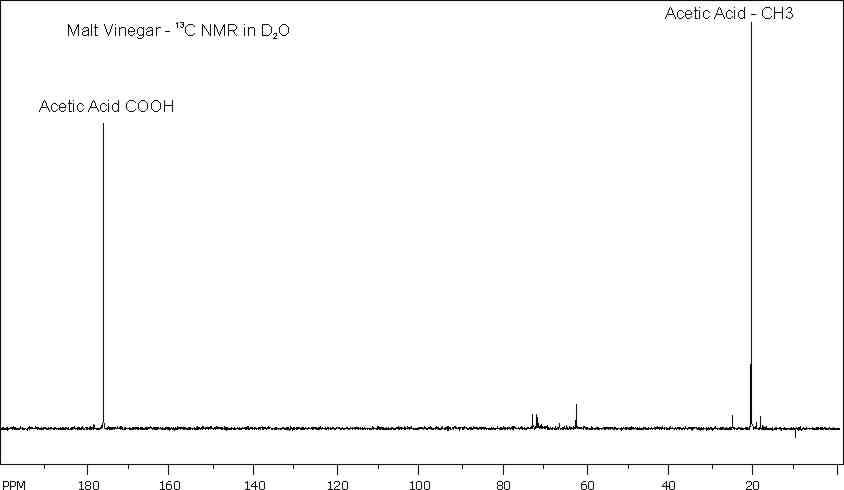Authenticity and Adulteration of Balsamic Vinegars
Over the past few years balsamic vinegars have been the subject of a number or NMR studies to determine authenticity, degree of aduleration, and age. 1H NMR has been used to quantify the relative concentrations of a series of organic components (ethanol, fructose, glucose, acetic acid, succinic acid, lactic acid, butandiol, etc (ref 1). 13C NMR has been used to determine the aunthenticity and degree of adulteration (ref 2) as well as the length of the ageing process that a given sample has undergone. Also the formation of glucose and fructose acetates during maturation and ageing has been studied by 1H and 13C NMR.
Refs.
1) Caligiani et al., Anal. Chim. Acta, 585 (2007) 110-119
2) Consonni et al., Talanta, 75 (2008) 765-769
3) Consonni et al., Anal. Chim. Acta, 611 (2008) 31-40
4) Consonni and Caligiani, Talanta, 73 (2007) 332-339
5) Cirlini et al, Food Chemistry, 112 (2009) 51-56
The concentration and distribution of the organic components has been found to correlate well with ageing process analysis, identification of adulteration, and determination of authenticity of traditional balsamic vinegars and balsamic vinegars of Modena.
Below are a series of spectra showing what can chemistry can be quantified in the balsamic vinegars as well as a few comparative spectra of apple cider vinegar and malt vinegar.








For more details and analysis of vinegar samples contact John Edwards